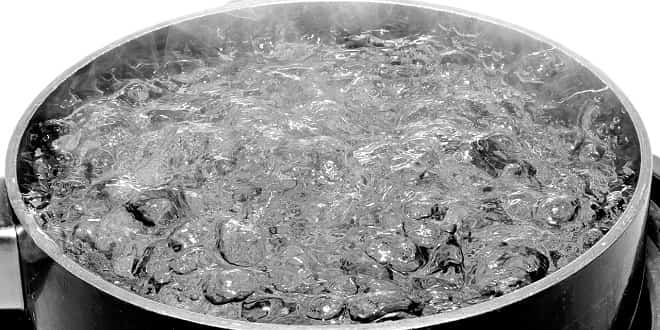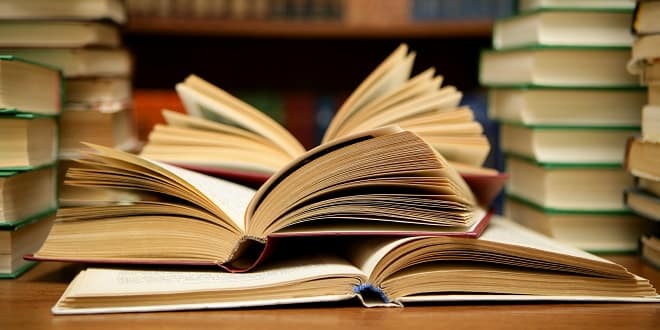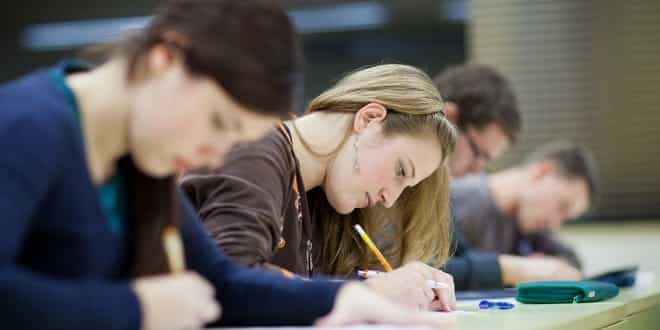Genel Kimya
-

Thermochemistry ( Dr. Bülent BELİBAĞLI )
The part of the universe we choose to study is called a system. The parts of the universe with which the system interacts are called the surroundings. Three systems: open system, closed system and isolated system. Internal Energy (E) is the total amount of energy (potential, kinetic, chemical energy,…) contained in a system. The components of internal energy are: Translational kinetic energy Molecular rotation. Bond vibration. Intermolecular attractions. Chemical bonds. Energy is the capacity to do work. Work is done when a force acts through a distance. A system contains…
-

Examples ( Dr. Bülent BELİBAĞLI )
Example: What quantity of heat is associated with the complete combustion of 1 kg of sucrose ? Solution: …
-

Boiling and the Boiling Point ( Dr. Bülent BELİBAĞLI )
Boiling and the Boiling Point When a liquid is heated in a container open to atmosphere, vapor bubbles form within the bulk of the liquid, rise to the surface throughout the liquid and escape. When the pressure exerted by escaping molecules equals that exerted by the gases of atmosphere, The heat absorbed during boiling is used only to convert liquid molecules to vapor. The temperature at which the vapor pressure of a liquid is equal to Standard atmospheric pressure (1 atm = 760 mmHg) is the normal boiling point. the boiling occurs. …
-

Critical Point and Supercritical Fluids ( Dr. Bülent BELİBAĞLI )
Critical Point and Supercritical Fluids (SCF) If a liquid is heated in a sealed container, boiling doesn’t occur. The temperature and vapor pressure rise continuously many times the atmospheric pressure. Then, we observe the followings; 1) density of liquid decreases; that of vapor increases and eventually the two densities become equal, 2) surface tension of the liquid approaches zero. The meniscus between the liquid and vapor becomes less distinct and eventually disappears. The fluid is not neither a liquid nor a gas now. The critical point is the point at which these conditions are reached…
-

Solutions and Their Physical Properties ( Dr. Bülent BELİBAĞLI )
Solutions are homogeneous mixture of 2 or more substances (Chp 4). – Uniform throughout. • Solvent. – Determines the state of matter in which the solution exists. – Is the largest component. – Dissolves solute • Solute. – Other solution components said to be dissolved in the solution. A saturated solution contains the maximum amount of a solute that will dissolve in a given solvent at a specific temperature. An unsaturated solution contains less solute than the solvent has the capacity to dissolve at a specific temperature. An electrolyte is a substance that, when dissolved…
-

Ionic Solutions ( Dr. Bülent BELİBAĞLI )
Ionic Solutions e.g., NaCl in H2O 1. Ions that are less tightly held because of their position at a corner or an edge of the crystal are exposed to water molecules 2. Water molecules will collide with the NaCl until an ion breaks free 3. More water molecules then cluster around the ion, stabilizing it by ion dipole attractions 4. The water molecules attack the weak part of the crystal until it is dissolved 5. Ions in solution are said to be solvated (hydrated) they are surrounded and stabilized by an ordered shell…
-

Examples ( Dr. Bülent BELİBAĞLI )
Example: What is the osmotic pressure at 25⁰C of an aqueous solution that is 0.001 M sucrose ? Solution: Example: A solution of an unknown substance in water at 298 K gives rise to an osmotic pressure of 5.66 atm. What is the molarity of the solution ? Solution: Example: A solution prepared by dissolving 20 mg of insulin in water and diluting to a volume of 5.0 mL gives an osmotic pressure of 12.5 mmHg at 300 K. What is the molecular weight of insulin ? Solution: …
-

Principles of Chemical Equilibrium ( Dr. Bülent BELİBAĞLI )
Chemical Equilibrium: The state that is reached when the concentrations of reactantsand products remain constant over time is called the state of chemical equilibrium. …







